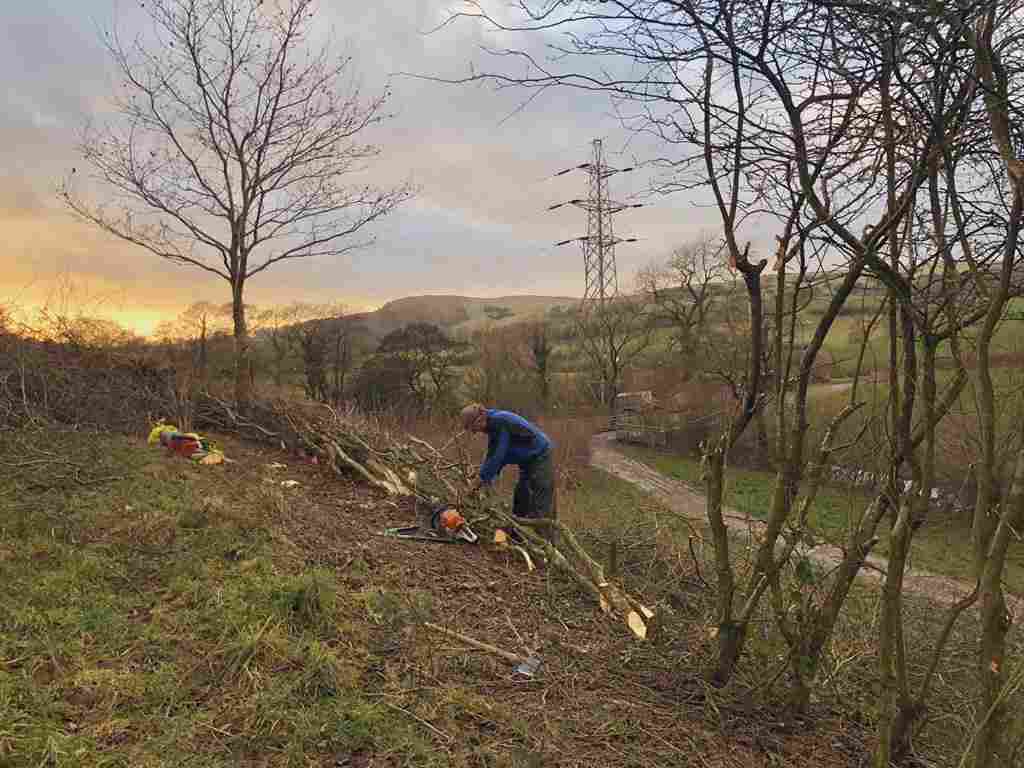Looking back to late summer, evenings spent looking around the stock are one of the best parts about being a dairy farmer.
The cattle happily grazed the clover rich grass, filling their bellies and everything looked well after a summer of good grass growth: The sun brought out the shine on the red Shorthorn coats, silage pits were full, and the hay was well got with no rain and baled with plenty of sun on it.
The hedgerows looked healthy too, their branches hanging low, full of fruit. Hazelnuts in great clusters of four, five or six at a time, hawthorn berries changing from lime green to a deep red, now matching the colour of the grazing Shorthorn cattle.
Holly berries massed on the usual trees, ready to feed the visiting winter thrushes. Loads of sloes too, but still showing a lot of green and waiting for a hard frost before they’ll be ready for gin.
How we help hedges and they help us
Whilst the nature of the hedgerows appears to be in perfect balance, both the hedges and the wildlife they support are only there because of the farmers and skilled craftspeople who care for and manage the hedge in a traditional way.
Ever since the field boundaries were created hundreds of years ago, farmers have routinely laid them down every 15-25 years to encourage new vigorous growth from the base. If this wasn’t done, the once thick, stock-proof boundary would, in time, become nothing more than a line of trees and its unique habitat and ecosystem would be lost.
Using a flail topper to manage them isn’t really a long-term option either; constant flailing at the same height only creates a gappy, plain and bare hedge that has little value for wildlife or shelter.
But why should we bother, if its only the wildlife which benefit from the hedge? Well for starters the farm benefits greatly from the hedges. We leave them to grow up after they’ve been laid, some of our mature hedgerows, which will be laid in the next few years, are now 5 or 6 metres high and almost as wide too.
Stand behind one of these on a wild, wet and windy day and its like you are inside and under a roof. The shelter they provide is invaluable, without them our grazing management would be much different, and the actual grazing season would be shorter by a good few weeks too.
But its not just the livestock which benefits from the shelter, the crop in the adjacent field is improved as well. Whilst there is a small amount of lost crop or grass under the canopy of a large hedge, the growth further out into the field is improved by much more than what was lost.
Hedges are homes
The wildlife which is supported by our hedgerows is incredible; walking beside them your senses are filled with scents of flowering elder and honeysuckle, they are alive with a mass of bees and other pollinators.
Some birds such as the tree sparrow almost uniquely use old thorn stocks in which to nest. And then there’s the flowers; bluebells, wood anemone, wood sorrel and primroses thrive in the rich soils and shelter, which only a well-cared for hedgerow can provide.
Experiencing natural wonders like these is part of our wellbeing, it can and indeed does help us to cope with some of the stresses which modern farming creates.
Hedges are part of British identity
Hedgerows and all the differing styles of hedgelaying are as much a part of British farming and national culture as the native breeds which we are so proud of. They give us and our produce such a unique identity.
I’ve been lucky enough to meet and have visits from farmers from across the world, and all of them marvel at our living boundaries, they just can’t get their heads around the effort and dedication which is required to keep them in good order.
And it’s this uniqueness, the shelter, the wildlife habitats and the ability to aid our wellbeing which are the reasons they are so important.
They give us something which no other farming nation or worldwide food producer has. They show that we care for the environment, care for our cultural heritage and therefore care about the food we produce.

